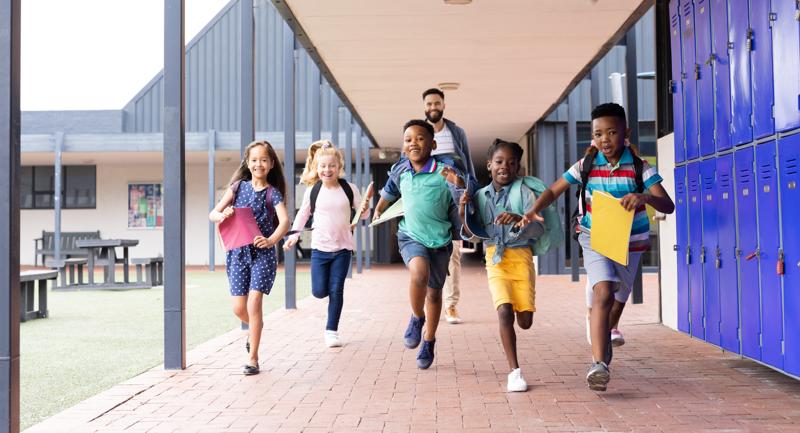Each year, every employee at ISTE+ASCD participates in Shadow a Teacher day, where we select a school to visit and observe an educator in action. This initiative gives us a chance to develop empathy for the realities and challenges of being an educator today and gain a deeper understanding of what effective learning looks like in practice.
While the rationale behind Shadow a Teacher is straightforward, the experience is often profound. I’ve been working closely with K–12 educator-writers for about eight years now here at ISTE+ASCD, and I deeply appreciate their dedication, hard work, and compassion. But nothing drives that home like stepping into an actual school, where you see kids struggle with a tough problem and then get it, admire the creativity and innovation in student work on display, or observe an inside joke between a teacher and a student that helps that kid know they belong.
This year, I observed a middle school English language learning teacher in Virginia. In one class alone, she had students who spoke six different languages and came from nearly 10 different countries. During a transition, when the teacher stepped out to use the bathroom, a student came into class, saw me, and said, “Oh no, are you a substitute?” When I said I was not, the beaming smile I got in return was clear: He was thrilled because he wanted his teacher there.
Don’t get me wrong—education is facing many challenges, as the recent NAEP scores show. But there is also so much going right, especially in educators’ dedication to and daily interactions with students. And when we can better understand the experiences of these teachers and leaders, it’s obvious how lucky we are to have them. It’s also clear how committed they are to trying something new, tweaking it, and trying again to make sure students get the most transformational learning experiences they can.
It’s clear how committed educators are to trying something new, tweaking it, and trying again to make sure students get the most transformational learning experiences they can.
This issue of EL celebrates educators’ commitment to getting it right. It’s full of articles that home in on aspects of teaching and learning that demonstrate positive impact and promise—strategies and practices that educators themselves are excited about.
Here are some highlights:
The science of learning has shone a light on how to teach effectively. “We now know more about how our brains learn, and how to support learning, than at any point in human history,” Bryan Goodwin writes. Drawing on his team’s research, he outlines key findings from learning science and how to apply them in the classroom.
Educator collaboration is key. When teachers work together, magic happens—but strong leadership is essential to making collaboration work, argues Steve Ventura. Research from Richard Ingersoll and Lennon Audrain also suggests that a team-teaching model has promise, helping decrease turnover while increasing teacher autonomy.
When schools center inclusion, support, and culturally affirming curriculum, Black students flourish. Jaleel Howard and Tyrone C. Howard highlight five practices from two schools that are serving Black students well in both academics and well-being.
In this time of turbulence and change, where struggles can overwhelm and burnout can creep in, it is still important, as Victoria Thompson writes, to celebrate “the good things happening in education,” which “not only fosters motivation and growth, but also builds a culture of positivity and inspires further progress.”








